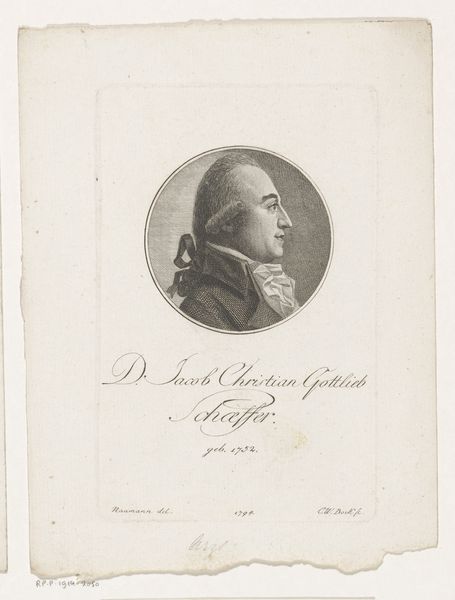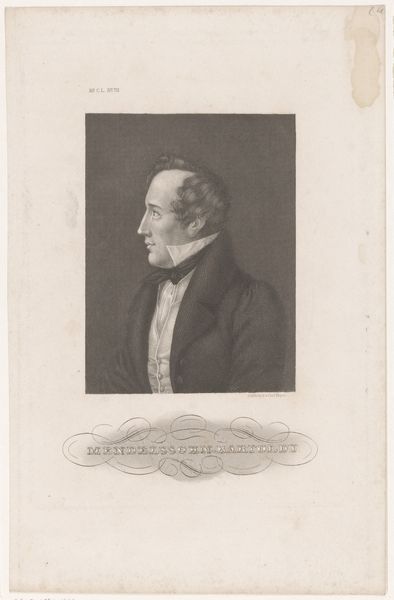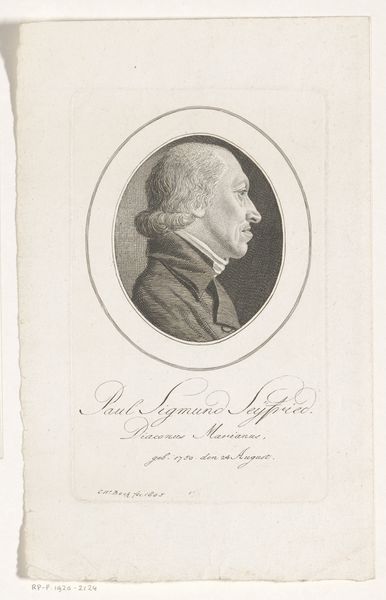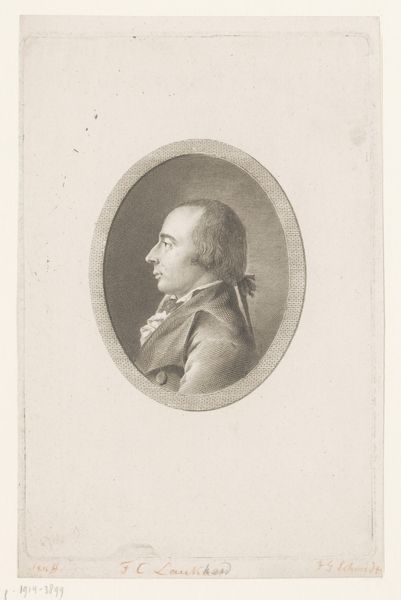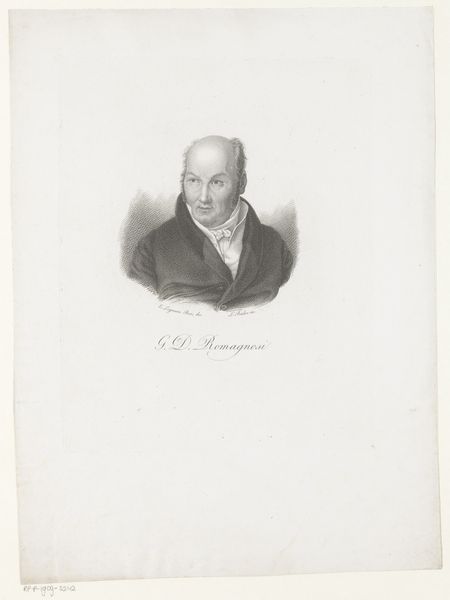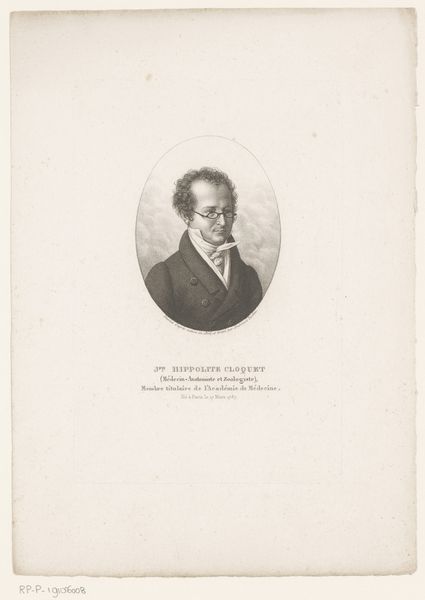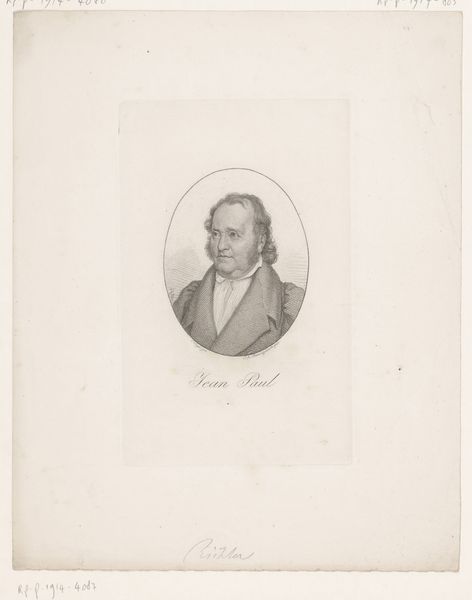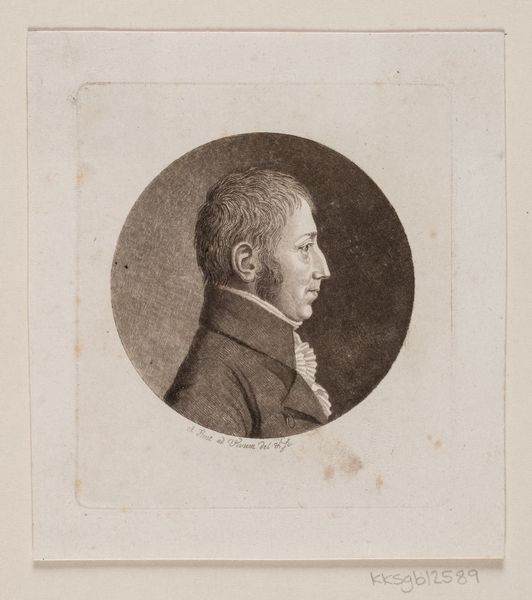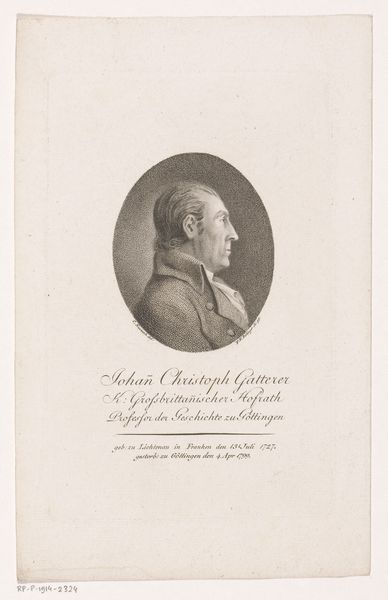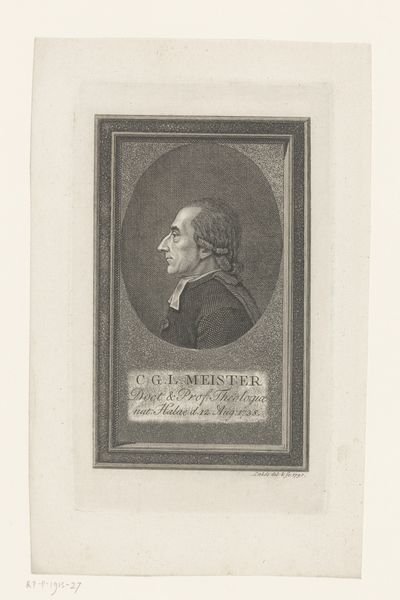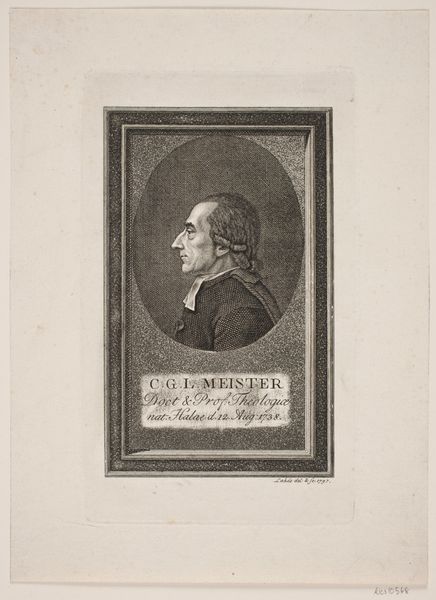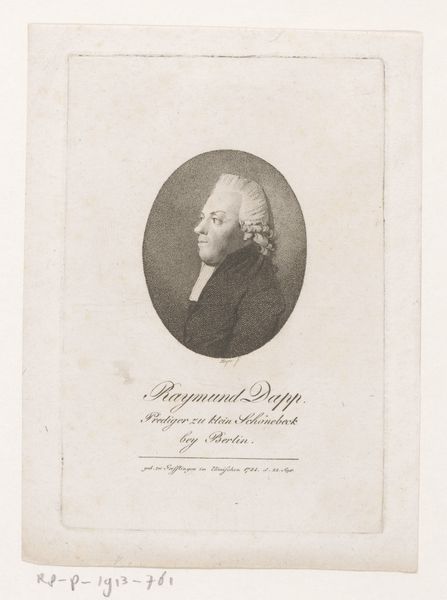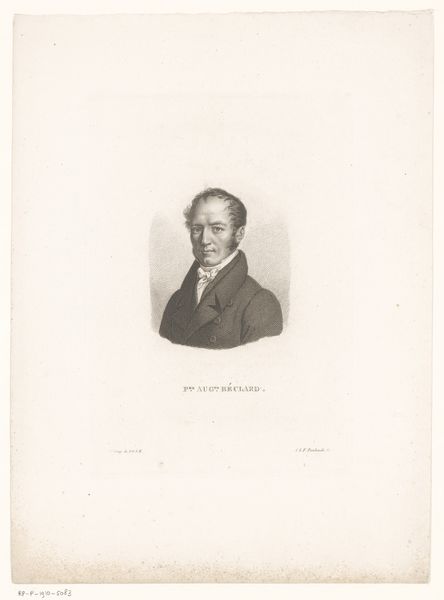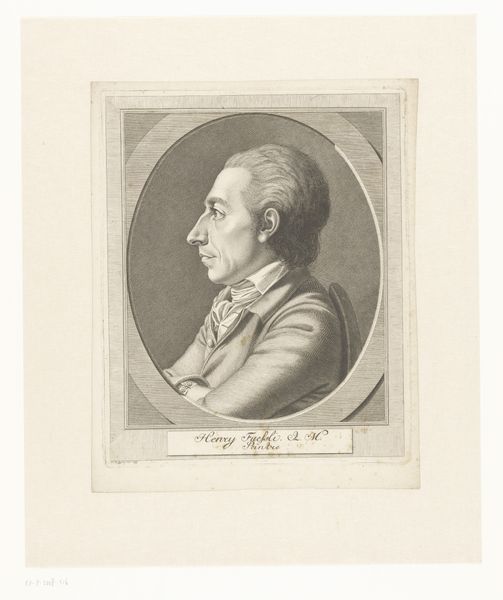
print, engraving
portrait
neoclacissism
old engraving style
classical-realism
line
history-painting
engraving
Dimensions: height 163 mm, width 103 mm
Copyright: Rijks Museum: Open Domain
Karl Heinrich Grünler made this portrait of Ernst August Sörgel using engraving, a printmaking technique, sometime before his death in 1823. This process involves cutting a design into a flat surface, in this case a copper plate, with a tool called a burin. Ink is then applied to the plate and wiped off the surface, leaving ink only in the incised lines. The plate is then pressed onto paper, transferring the image. The linear quality of the engraving lends itself well to detailed portraiture, capturing the likeness and character of the subject. The crisp lines and subtle gradations of tone create a sense of depth and volume, while the use of hatching and cross-hatching adds texture and visual interest. Engraving was a popular method for disseminating images and information in the 18th and 19th centuries. It allowed for the mass production of prints, making art accessible to a wider audience and contributing to the growth of visual culture. We begin to understand how the material process of printmaking intersects with the broader historical context of labor and the rise of capitalism.
Comments
No comments
Be the first to comment and join the conversation on the ultimate creative platform.
